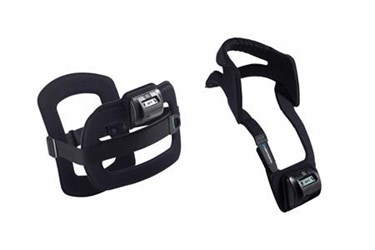Orthofix Snags FDA Approval, CE Mark For 'Smart' Bone Growth Stimulation

Orthofix announced both FDA and CE Mark approvals for its next-generation CervicalStim and SpinalStim bone growth stimulators (BGS), non-invasive devices that use low-level pulsed electromagnetic fields (PEMF) to enhance the healing process following orthopedic fusion surgeries. The technology now offers companion smart technology — Stim onTrack — designed to promote patient compliance with prescribed therapy and to transmit real-time compliance data to physicians.
Bone growth stimulators can be used internally (implanted) or externally in high-risk cases where surgical bone fusions are not expected to heal correctly, such as in patients who have had previous fusion surgeries that failed. External devices are less invasive, but require the patient to use as prescribed between two and nine hours per day, for three to nine months following surgery.
Orthofix first introduced SpinalStim in 1990, and the company reports clinical success rates of over 92 percent when the device is used post-operatively and is the only device of its kind approved by the FDA for the non-surgical treatment of failed lumbar fusions. Likewise, CervicalStim, introduced in 2004, is the only FDA-approved non-invasive, adjunctive treatment option for cervical fusion, and has demonstrated a clinical success rate of 84 percent.
Next-generation BioStim technology includes a new application for mobile devices, which provides updates and reminders that assist patients in complying with their therapy, said the company in a press release. The app, which is available for free through ITunes, also transmits data to physicians who can follow their patient’s adherence with real-time data. Additional features improve the fit of the devices and their ease of use.
“Patient recovery is often dependent on how well they follow the prescription for the device,” said James Ryaby, chief scientific officer at Orthofix. “Equipping patients with a mobile app to help them adhere to their prescription is an excellent addition to this system while simultaneously enhancing post-surgical care by giving physicians additional data to help personalize follow-up protocols.”
Brad Niemann, president of the Orthofix BioStim strategic business unit, commented that company’s goal is to “redefine the recovery experience” and to continue working with physicians to improve patient outcomes.
In a recent report by Future Market Insights, analysts project the market for bone growth stimulators will reach $2.5 billion by 2025. The report attributes growth to expanding applications in sports medicine and the increasing economic costs of disability.
The healthcare industry’s recent transition towards value-based care and the advancement of telehealth solutions has intensified pressure on device developers to look at the entire continuum of care for delivery models that extend beyond the hospital. According to a report by Frost and Sullivan, remote patient monitoring systems (RPM) are positioned to thrive, and Allied Market Research projects a $2.13 billion market by 2022.
“As patients further embrace their transition from passive healthcare recipients to empowered consumers, med tech manufacturers must consider both the clinician and the end user in solution designs,” wrote analysts from PwC in a recent MDO guest column. “Products and services designed to integrate seamlessly into the physician workflow…are more likely to be adopted.”
